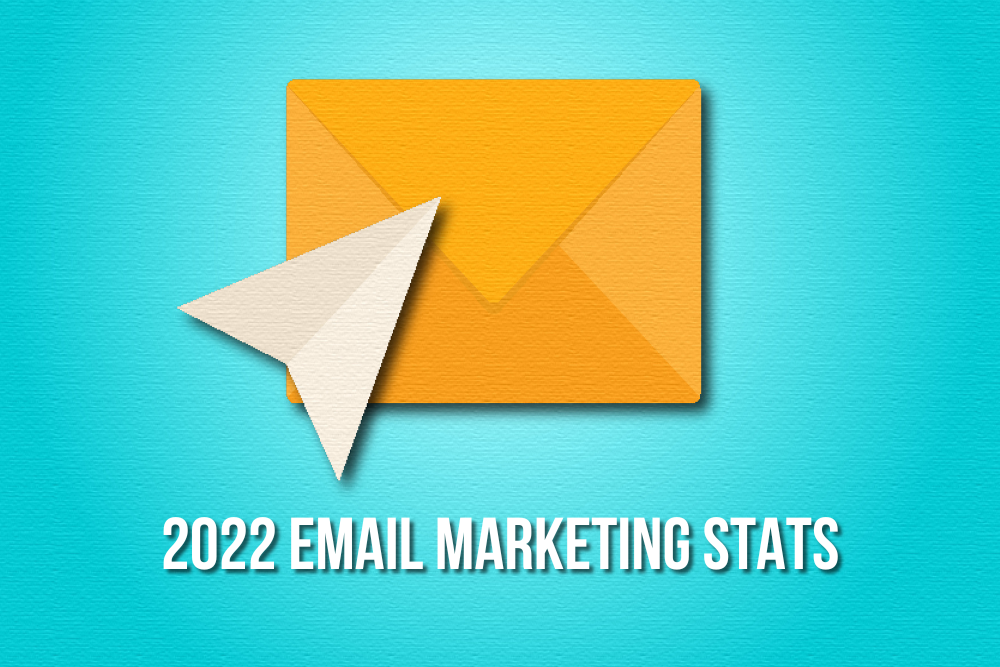It sure has been a roller coaster ride for email marketers over the last 3 years. Sure, you could say that about pretty much everything, but it feels particularly true in the email marketing world where we have seen some unprecedented statistics and enormous technological changes.
We’re here to make sense of it all with a 2022 email marketing statistics and benchmarks report. We have pulled together from multiple outlets to give you an all-in-one comparison in today’s world. This report will give you better insight into how your emails should be performing relative to others in your industry, and what you can do to improve those metrics. Whether you’re wondering if your click-through rates (CTR) are too low or your unsubscribe rate is too high, you’ll find the answer here in this report.
We’ll also dive into some best practices for improving engagement and measuring your results as you finish up the year.
Where Is the Data Coming From?
We have searched numerous outlets in the digital marketing world and found some of the best-known websites like Campaign Monitor and SEMrush to get these useful and very insightful statistics.
Email Benchmarks by Industry
Let’s take a look into some of the industries that are out there to see where you’re ranking among others.
|
Industry |
Open Rates |
Click-Through Rates |
Click-To-Open Rates |
Unsubscribe Rates |
|
Advertising & |
20.5% |
1.8% |
9.0% |
0.2% |
|
Agriculture, Forestry, |
27.3% |
3.4% |
12.5% |
0.3% |
|
Consumer Packaged |
20% |
1.9% |
11.1% |
0.1% |
|
Education |
28.5% |
4.4% |
15.7% |
0.2% |
|
Financial Services |
27.1% |
2.4% |
10.1% |
0.2% |
|
Restaurant, Food & |
18.5% |
2.0% |
10.5% |
0.1% |
|
Government & Politics |
19.4% |
2.8% |
14.3% |
0.1% |
|
Healthcare Services |
23.7% |
3.0% |
13.4% |
0.3% |
|
IT/Tech/Software |
22.7% |
2.0% |
9.8% |
0.2% |
|
Logistics & Wholesale |
23.4% |
2.0% |
11.7% |
0.3% |
|
Media, Entertainment, |
23.9% |
2.9% |
12.4% |
0.1% |
|
Nonprofit |
26.6% |
2.7% |
10.2% |
0.2% |
|
Other |
19.9% |
2.6% |
13.2% |
0.3% |
|
Professional Services |
19.3% |
2.1% |
11.1% |
0.2% |
|
Real Estate, Design, |
21.7% |
3.6% |
17.2% |
0.2% |
|
Retail |
17.1% |
0.7% |
5.8% |
0.1% |
|
Travel, Hospitality, |
20.2% |
1.4% |
8.7% |
0.2% |
|
Wellness & Fitness |
19.2% |
1.2% |
6.0% |
0.4% |
|
Average Totals |
21.5% (+3.5%) |
2.3% (-0.3%) |
10.5% (-3.6%) |
0.1% (-) |
Source: campaignmonitor.com
Looking at these metrics, it’s easy to spot some trends as they relate to events of the past year.
- The Education industry has the highest open rate, and the highest click-through rate at 28.5% and 4.4%, respectively. This makes sense, as schools needed to communicate with their students & parents more than ever for things like policies for COVID.
- Government & Politics took the top spot, which also makes sense, given that 2020 was a huge election year in the US.
- Retail is an interesting one to note. As an industry, it holds the title for both lowest open rate by industry (17.1%), and the biggest jump in open rate year-over-year, up 4.5%.
- Real Estate, Design, & Construction have the highest click-to-open rate at 17.2% — no doubt riding the real estate boom in 2021.
The Effects of Mail Privacy Protection
While it may not seem like much on the surface, those swings in average open rate across all industries (up 3.5% year-over-year), and click-to-open rate (down 3.6%) are pretty significant! And it turns out, there’s a reason for it.
For those unfamiliar with Mail Privacy Protection, it’s a new privacy feature released by Apple in September 2021. This feature gives users more control over their data when it comes to their inbox.
MPP effectively disables open rate tracking by pre-fetching (or downloading) an email and its images (including email’s tracking pixels). By doing this, MPP is marking an email as opened, artificially inflating open rates for each user that has opted into the new feature.
When looking at the metrics year-over-year, it’s not hard to see how MPP is affecting open rates. But when you break it down on a month-by-month basis, it’s even easier to see.
Do You Know Your Customers?
Every email marketer swears that they know the best day to send emails, but do they have the proof to back it up? Typically, we send emails always on or around the same day and time, we rarely try to go back and make any changes. So how come we swear by our own data when we don’t test?
|
Day of the week |
Open Rate |
Click-Through Rate |
Click-to-Open Rate |
Unsubscribe Rate |
|
Sunday |
20.3% |
2.1% |
10.1% |
0.1% |
|
Monday |
22.0% |
2.3% |
10.6% |
0.1% |
|
Tuesday |
21.8% |
2.4% |
10.8% |
0.1% |
|
Wednesday |
21.8% |
2.3% |
10.7% |
0.1% |
|
Thursday |
21.7% |
2.3% |
10.7% |
0.1% |
|
Friday |
21.6% |
2.2% |
10.1% |
0.1% |
|
Saturday |
20.5% |
2.1% |
10.1% |
0.1% |
Source: campaignmonitor.com
Best Days to Send Marketing Emails
When looking at email statistics by day, there doesn’t seem to be too much variance in how emails perform on a given day. Overall, weekdays tend to perform the best, with the lowest engagement numbers falling on the weekend.
- Best day with highest email open rates: Monday (22.0%)
- Best day with highest CTR: Tuesday (2.4%)
- Best days with highest click-to-open rates: Wednesday and Tuesday (10.8%)
- Email unsubscribe rates were identical throughout the week (0.1%)
Worst Days to Send Marketing Emails
Based on the averages by day shown above, these are the worst-performing days for sending.
- Worst day with lowest email open rates: Sunday (20.3%)
- Worst days with lowest click-through rates: Saturday and Sunday (2.1%)
- Worst day with lowest click-to-open rates: Friday, Saturday, and Sunday (10.1%)
While this data is academically interesting, you should carefully consider your own audience and run email tests before blocking entire days off your campaign calendar.
Email Benchmarks by Region
It can be interesting to compare email benchmarks by region and see how subscribers across the world respond to email. Though there aren’t huge gaps in engagement across regions, there are differences that are fascinating to look at. Note: this may or may not apply to your business, but it’s something to keep in mind when scaling your business.
|
Region |
Open Rate |
Click-Through Rate |
Click-to-Open Rate |
Unsubscribe Rate |
|
AMER |
21.0% |
2.2% |
10.4% |
0.1% |
|
UK |
22.9% |
2.4% |
10.6% |
0.1% |
|
EU |
22.1% |
2.2% |
10.7% |
0.2% |
|
APAC |
22.4% |
3.0% |
13.4% |
0.3% |
The Asia-Pacific region has the highest engagement rates across the board, including the highest unsubscribe rates. Clearly, subscribers from this region are engaging with email marketing, but they’re also keeping a close watch on who they let in their inboxes.
Is Artificial Intelligence in Email Marketing’s Future?
Artificial intelligence has created a big movement in email marketing. In fact, 41% of email marketers agree that the best effect artificial intelligence has on email marketing is revenue improvement by increasing open and click rates.
The most popular use of AI in email marketing is optimizing send times. 66% of company employees use this feature to ensure recipients are more likely to see the email content.
You can also use AI to restructure your email campaigns by breaking your market into hundreds of sub-campaigns, cleaning up email lists, personalizing email bodies, and writing personalized and successful email subject lines.




